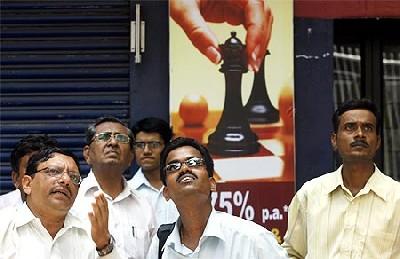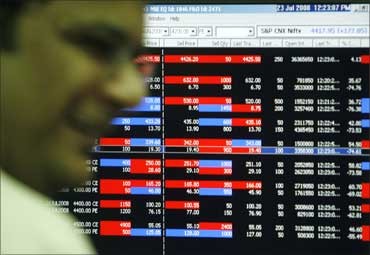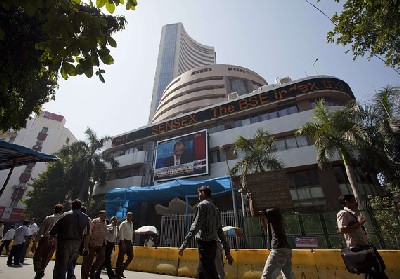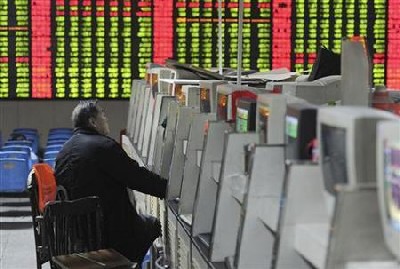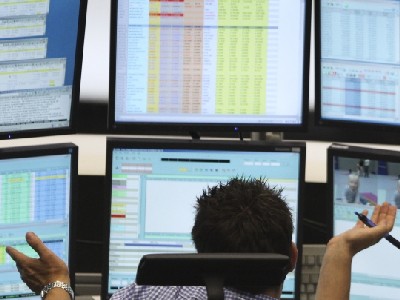 | « Back to article | Print this article |
Small stocks take big beating in 2011
The downslide on Dalal Street did not spare big names in 2011, but small stocks lived up to their nomenclature with a much more sickening slump and investment in mid-cap companies also turned out to be messy affair.
As the year 2011 draws to an end, the market metrics suggest wide under-performance by mid-cap and small-cap stocks in comparison to their large-cap peers.
Market watchers call this a natural phenomenon and say that companies with relatively smaller sizes and less fundamental strength are bound to be hurt the most in times like 2011, when markets across the world were seen bleeding.
Click NEXT to read more...
Small stocks take big beating in 2011
Data available with the stock exchanges shows that the mid-cap and small-cap indices have fallen by about 34 per cent and 42 per cent, respectively, since the beginning of 2011.
The blue-chip index, the Sensex, has managed a better performance despite a significant slump of about 23 per cent during the same period.
In comparison, the performance of all the three segments was almost similar in the previous year 2010, when the mid-cap index and small cap index had gained about 16 per cent each, while the Sensex fared little better by rising about 17 per cent.
One of the major issues that cost mid-cap and small-cap stocks dearly was the burden of huge debts, as meeting these obligations became quite troublesome for them in times of economic uncertainty and a high interest rate regime.
Click NEXT to read more...
Small stocks take big beating in 2011
Macroeconomic headwinds on the global and domestic front and concerns over policy reforms and currency fluctuation were some of the other factors that resulted in volatile and uncertain market conditions through 2011.
Analysts said investor interest in mid-cap and small-cap stocks continues to wane, as large-cap shares are preferred in these uncertain times.
In terms of valuation, the market capitalisation of the BSE-listed small cap companies has slumped by over Rs 1.7 lakh crore from more than Rs 4 lakh crore at the start of 2011.
Click NEXT to read more...
Small stocks take big beating in 2011
Similarly, the valuation of mid-cap firms has fallen by close to Rs 3.8 lakh crore from about Rs 11.3 lakh crore.
The absolute losses for the 30 Sensex blue-chip companies are obviously much higher at about Rs 20 lakh crore, owing to their large sizes.
However, there was some parity among the large-cap, mid-cap and small-cap segments of the market, as the indices for all three classes fell to their lowest levels of the year on the same day, that is December 19.
Click NEXT to read more...
Small stocks take big beating in 2011
"Smaller companies are quite vulnerable to the macro environment, particularly those with high debt. In a rising interest rate and high inflation environment, small companies which are working on wafer-thin margins are the most affected," Emkay Investment Managers Fund Manager Sachin Shah said.
"In the last few months, we have had significant rupee depreciation, further deteriorating the macro environment.
Therefore, investors are quite averse to invest in smaller companies with such a hazy macro outlook," Shah said.
Click NEXT to read more...
Small stocks take big beating in 2011
Market observers also said that investor participation has gone down terribly in the mid-cap and small cap space, which is also hurting the valuation of these sectors.
"Retail investors were very active during 2005�. Post-2008, retails investors had significant wealth erosion in equity markets, particularly in mid and small-cap stocks and which hardly got recovered in the last four years.
"The memory of such significant erosion of wealth continues to be an over-hang on the minds of investors to even be open to opportunities available on small-cap stocks," Shah added.
Click NEXT to read more...
Small stocks take big beating in 2011
This year, some of the stocks have lost in excess of 80 per cent of their value and many others also hit all-time lows. Some of the biggest losers include KS Oils, Triveni Engineering and ICSA India.
Furthermore, some stocks were also hurt due to the negative newsflow surrounding them. As a result, a host of stocks, like Dhanlaxmi Bank, Sun TV, Kingfisher Airlines, DB Realty, Everonn Education, Pipavav Defence, Crompton Greaves, GTL and GTL Infra suffered heavily.
Click NEXT to read more...
Small stocks take big beating in 2011
Market men said that small caps are more vulnerable to the slowdown in the economy and their capability to pass through this rough environment is always lower.
"Management capability, raw material management, working capital issues, raising capital during these times becomes difficult due to the downturn," Edelweiss Securities Head Research - Retail Capital Markets Vinay Khattar said.
"Moreover, these companies face a lot of corporate governance issues. Therefore, when people come to sell, these stocks face the brunt first, thereby impacting their share price," he added.
Click NEXT to read more...
Small stocks take big beating in 2011
Experts said the reason as to why blue-chip stocks have fared better than small companies is that big companies are available at cheap valuations, which forces investors to look at these large-cap stocks with high revenue visibility, good management and strong cash flows.
On the outlook for these sectors for the year 2012, it could an uphill task for small companies because large caps could be the first to gain when the markets turn around.
"We are still 12-15 months away from a bull run in our markets. So with this logic, small-caps will need to go through another painful period for the next few months," MAPE Securities' Samir Gilani said.
